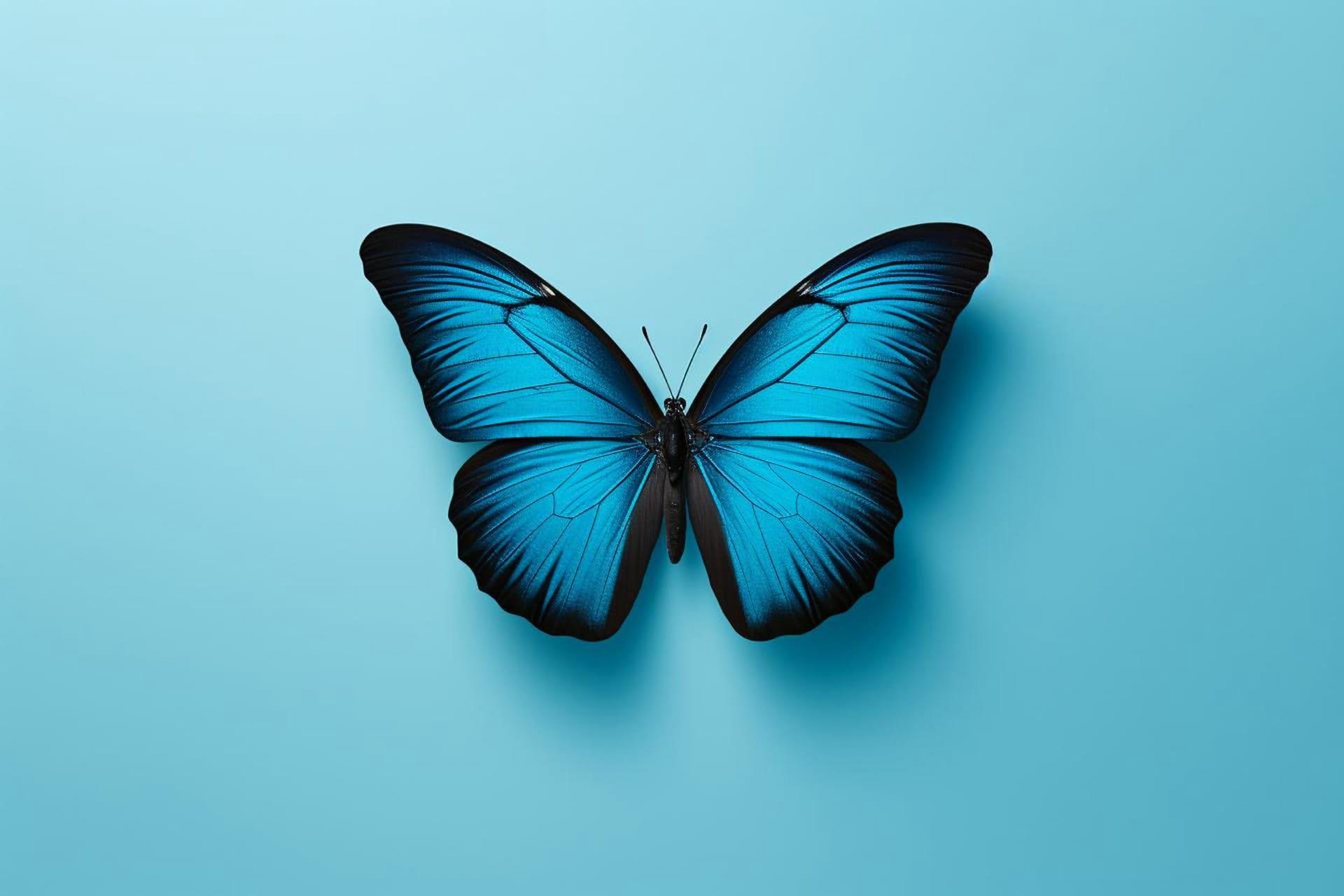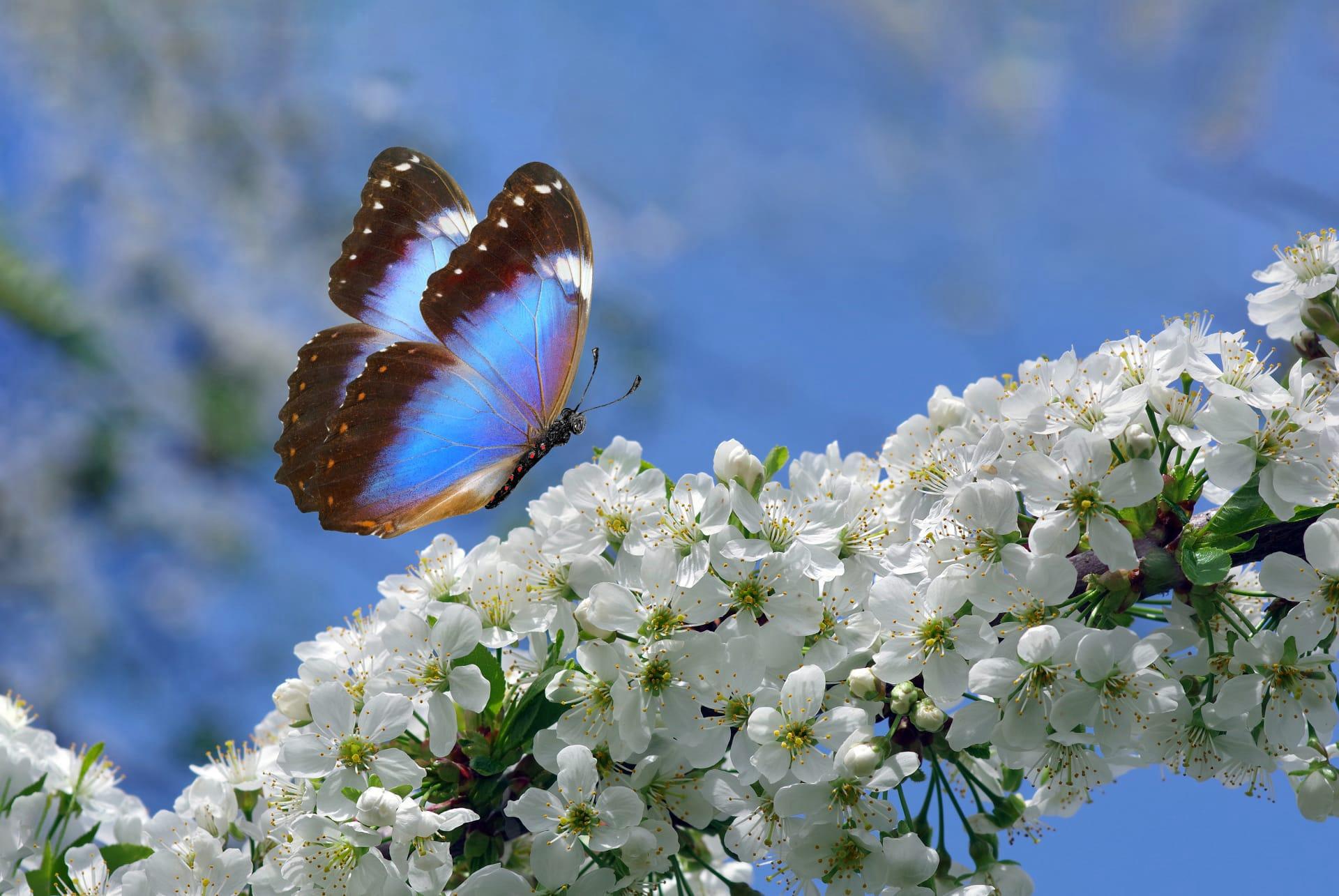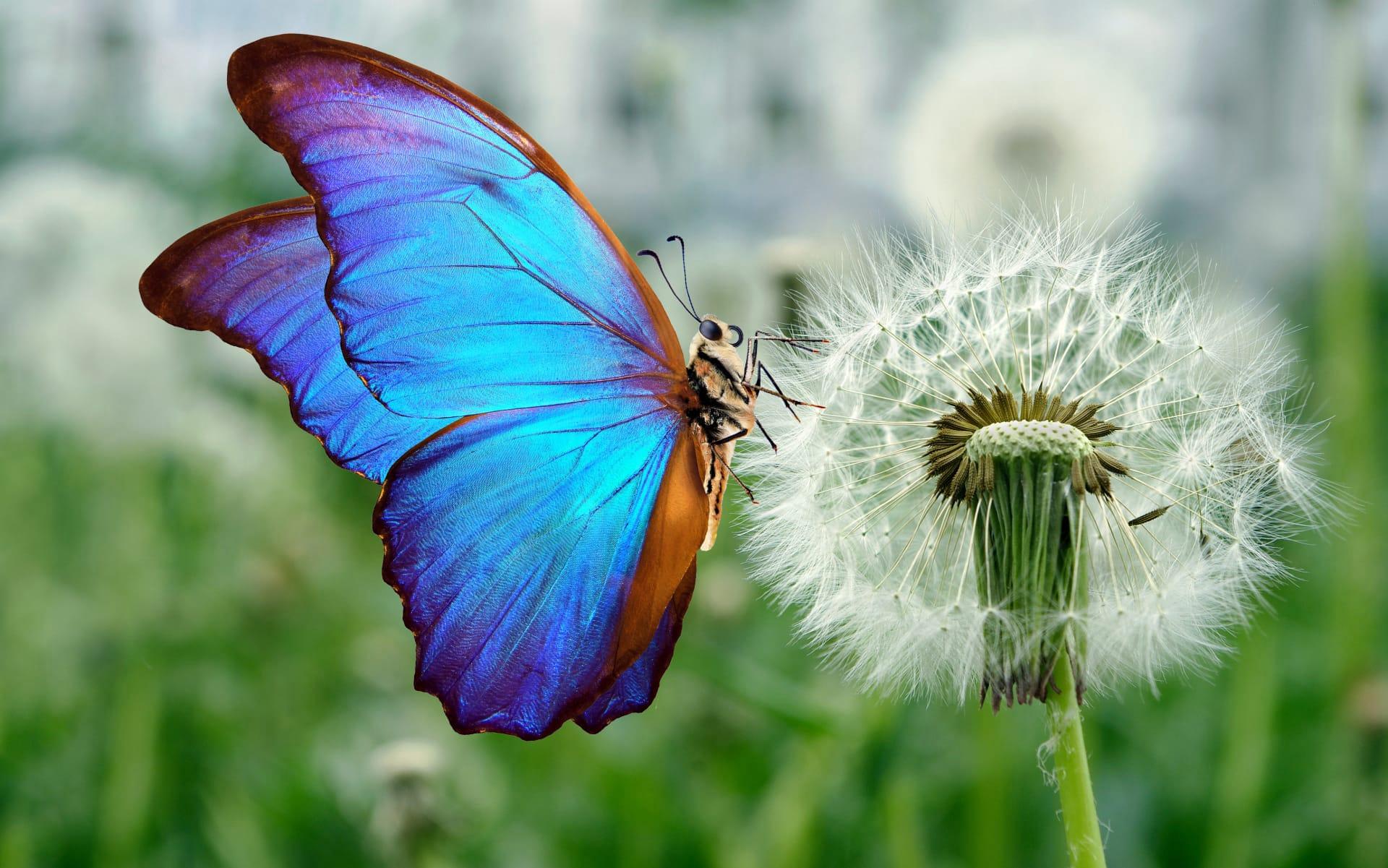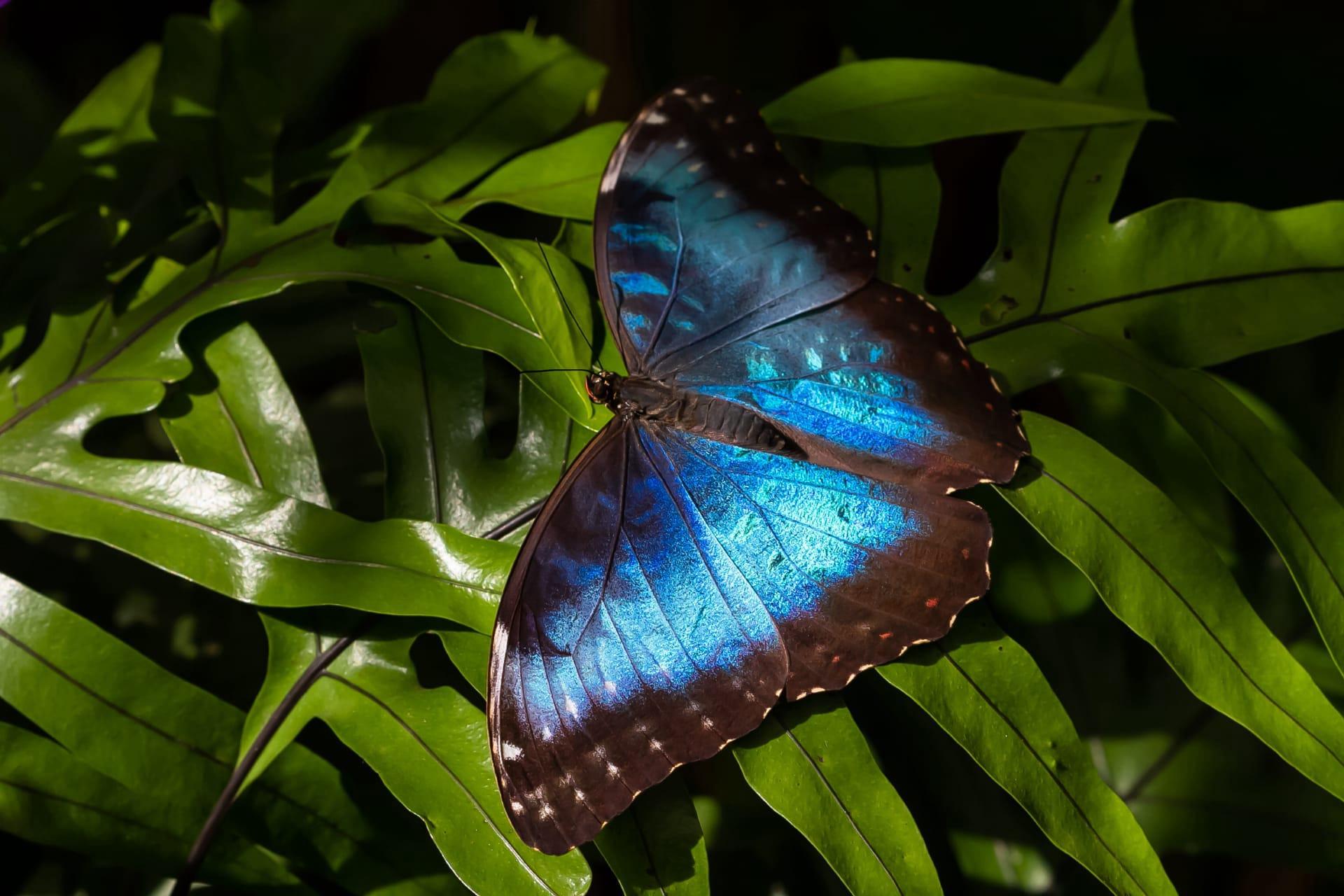1
Did you know that the stunning blue color of the Morpho butterfly isn't due to pigment? Instead, it's caused by the way light interacts with microscopic scales on their wings. These scales are shaped in such a way that they reflect only blue light. In fact, each wing scale is about 0.1 millimeters in size and contains tiny ridges, spaced about 0.00022 millimeters apart. This spacing is what causes the specific wavelength of blue light to be reflected, creating their vivid coloration.
The Morpho butterfly's wingspan can be quite impressive, ranging from 7.5 to 20 centimeters across. This large size, combined with their bright blue wings, makes them one of the most noticeable and admired species in their habitat. The males typically have brighter and more vibrant wings than the females, using this brilliance to attract mates. Interestingly, the underside of their wings is a dull brown color with many eyespots, providing camouflage against predators when their wings are closed.

2
These butterflies are not just a feast for the eyes; they're also important pollinators. While they primarily feed on the juices of rotting fruits, Morpho butterflies occasionally visit flowers for nectar. Their role in pollination, though not as significant as bees, is still vital to the ecosystem. The preference for rotting fruit means they help in decomposing and recycling nutrients back into the forest floor.
Morpho butterflies have a unique way of staying hydrated. They've been observed drinking the tears of turtles and alligators. This unusual behavior, known as "lachryphagy," helps the butterflies obtain salts and proteins essential for their survival. The tears provide a rich source of nutrients, especially sodium, which is scarce in their regular diet of fruit and nectar.

3
Despite their bright appearance, Morpho butterflies employ an effective defense mechanism against predators. When flying, the flashing blue of their wings can confuse or startle predators. However, when they land and close their wings, their brown and camouflaged underside helps them blend into the surrounding environment, making them nearly invisible.
Their lifespan is surprisingly short. In the wild, Morpho butterflies usually live for only about 115 days. This brief lifespan is typical for many butterfly species. During this time, they undergo a complete metamorphosis, from egg to larva (caterpillar), then to pupa (chrysalis), and finally, emerge as the adult butterfly. Each stage has its unique challenges and adaptations for survival.

4
Interestingly, the iridescent wings of the Morpho butterfly are not just for show; they've inspired technological advancements. Scientists and engineers have studied their wings to develop anti-counterfeit technology for banknotes and ID cards. The structure of their wings has been mimicked to create surfaces that change color depending on the viewing angle, making it difficult to replicate accurately.
The Morpho butterfly has also contributed to advancements in automotive paint technology. The pigment-free coloration inspired researchers to develop a new type of paint that mimics the way Morpho wings reflect light. This paint is more environmentally friendly since it doesn't use toxic pigments and can change color when viewed from different angles, adding an extra layer of aesthetic appeal to vehicles.

5
Morpho butterflies are highly sensitive to environmental changes. Their presence in an ecosystem is often considered an indicator of the health of the ecosystem. A decline in their numbers can signal environmental problems like habitat destruction, climate change, or pollution. Conservation efforts for these butterflies are crucial, not only for their survival but also for the health of their natural habitats.
Their vision is quite remarkable. Morpho butterflies have a wide visual spectrum, being able to see not only the usual colors but also in the ultraviolet range. This ability helps them in navigating, finding food, and communicating with other butterflies. Their large eyes are composed of thousands of individual lenses, allowing them to have a wide field of view and detect fast movements, essential for avoiding predators and finding mates.